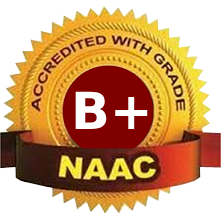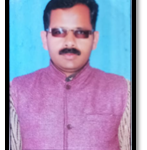Music
Department of Music
- About
- Faculty
- Syllabus
- Subjects(PO/PSO/CO)
- Infrastructure
- Lab Guidelines
- Achievements
- Activities
- Collaborations
ABOUT THE DEPARTMENT
Department of Music, NSCBM Govt. Degree College, Hamirpur was established in the year 1965 and offers B.A. in Music. Studying in the Department of Music, NSCBM Govt. Degree College, Hamirpur is a truly different experience for the students. This is because on one hand, the students pursue their concurrent courses, while on the other hand, they also learn the traditional art forms of Indian classical music from the institute.
VISION
The vision of the department of Music is to foster a holistic learning experience in young minds and channelize their talent and hone their skills to ensure a holistic and nurturing learning experience. The department aims to give a platform to students to actualize their talents and to give it a meaningful direction. Its objective is to focus on students who are intrigued by music and train them to master the subject and pursue it further.
MISSION OF THE DEPARTMENT
To ensure holistic and all-round development and train students to attain proficiency in their fields and stroke their passion for music and encourage them to meet their professional goals.
SIGNIFICANCE
Hindustani music connects the students and acquaints them to our traditional roots and tries to preserve the rich cultural heritage of Indian Classical Music and pass on the legacy to the generations to come to keep this ancient art form alive.
OBJECTIVES
The main objective of our department is to create passionate musicians, teachers, educators and researchers who would pass on the legacy and rich cultural heritage to their succeeding generations. To equip students with the right skill set and techniques so that they can pursue it as a career. Also, to promote research in various aspect of Music and inter-disciplinary research.
FUTURE SCOPE
Extensive research opportunities available in renowned central and state universities by ensuring highest standards of teaching and learning. Also preparing the students to showcase their talents and skills and get due recognition on various platforms.
| Sr. No. | Name | Designation | Profile |
| 1. | Mr. Manoj Kumar | Assistant Professor | View |
Programme Outcomes (PO), Programme Specific Outcomes (PSO) and Course Outcomes (CO) for B.A. with Music (Vocal)
Department of Music (Vocal) | Successful completion of three-year degree program in Music (Vocal) : | |
Programme Outcomes (PO) B.A. Music (Vocal) | PO-1.Course Provides the learners with knowledge & skills needed to prepare for a professional career as a musician. PO-2. Through the various programs they are trained to acquire different types of skills like voice culturing, teaching development skills, performance orientation, etc. PO-3. Programs and workshops motivate them to analyze the performance skills and thereby gain vast experience. PO-4. Awareness sessions help to update their knowledge which is required to face the challenges in live performances. | |
Programme Specific Outcomes (PSO) B.A. Music (Vocal) | PSO-1. The course will definitely be beneficial to those students who want to pursue Music as a profession. PSO-2. The course will enhance the capabilities of students in other fields too, with aptitude and interest in music. PSO-3. With this course students will be able to achieve their graduation degrees besides improving their skills in Music. PSO-4. They can go for higher studies in performing arts. PSO-5. They can become Music Teachers, Instructors. PSO-6. Students can also become professionals and pursue their careers as professional artists. PSO-7. Students will be in a position to appreciate the rich Indian Culture and performing arts. PSO-8. This course will also lead to self-actualization by the students which will enhance their self-esteem. | |
Course Outcomes (CO) B.A. Music (Vocal) First Year | ||
Course | Outcomes | |
Basic Principles of Indian Music & Biographies of Musicians, Composers and Musicologists. MUSA 101 (TH) | CO-1 They will understand the basic principles of Indian Music. CO-2 They will be better able to understand rich Indian culture of performing Arts. CO-3 Students would gain historical developments in Music. CO-4 Fundamental knowledge of classical Indian Music would be imparted to the students. CO-5 To introduce the students with the various historical aspects of Indian Music. CO-6 Students would gain theoretical knowledge of historical developments in the field of Indian Music. | |
| CO-7 Students would develop a working knowledge of different perspectives in Indian Music. | |
Practical Stage | CO-1 This will help the students to improve their skills and | |
Performance | they can become professionals. | |
MUSA 102 (PR) | CO-2 Students would know how to face the audience, how should seat on the stage. CO-3 Students would be able to understand depth perception about what the audiences want to hear. CO-4 Students would be able to various Raagas which are available in syllabus. CO-5 Students would demonstrate knowledge about the various techniques of stage performance. CO-6 Students would be able to use their practical | |
| knowledge about music. | |
Theory of Music | CO- They will come to know about the hard work and | |
(General) and | contribution of great Musicians,different terms of muic and | |
Biographies of | different raagas and taals given in the course. | |
Musicians, Composers |
| |
and Musicologists. |
| |
MUSA 103 (TH) |
| |
Practical Viva-Voce MUSA 104 (PR) | CO-1 Student’s aptitude and skills in the field of Indian classical music will be enhanced. CO-2 Students would gain training regarding designing, execution and reporting of various Raagas. CO-3 Students would be familiarized with presentation and description of Raagas. CO-4 Students would be able to know about the nature of raagas which are in the syllabus. CO-5 Students would gain proficiency in performing various raagas. | |
Second Year | ||
Theory of Indian | CO-1 Students will gain vast knowledge of Granthas, Natya Shastra, Sangeet Ratnakar, Vrihdeshi. CO-2 Students will gain vast knowledge about the comparative study between the raagas and granthas given in the syllabus. CO-3 They will learn how to write compositions in taals and notaions. | |
Music, Ancient | ||
Granthas & | ||
contribution of | ||
Musicologists. | ||
MUSA 201 (TH) | ||
Practical | CO-1 To aware students about Ragas Malkauns, Maru Bihag | |
Stage Performance MUSA 202 (PR) | and Brindabanisarang CO-2 The Students would familiarize with the various categories of various raagas. CO-3 The students would acquaint how the various raagas can be performed on Harmonium. CO-4 Students whould be able to understand the basics of various taals. CO-5 Students would understand how Teen Taal and Vilambit can be performed on Tabla. CO-6 Students would understand various aspects of singing. | |
Theory of Indian Music, Medieval Granthas, and contribution of Musicians and Musicologists. MUSA 203 (TH) | CO-1 Course exposes the students to the Granthas Sangeet Parijat, Sawar Mel Kala Nidhi, Chaturdandi Prakashika. | |
Paper IV Practical | CO-1 Course familiarizes students with the different Ragas | |
Viva-Voce | & Talas. | |
MUSA 204 (PR) | CO-2 Familiarization with the both Khayal CO-3 Acquaint the students with the various styles of singing. CO-3 Students would understand the structure of various raagas. CO-4 Students would understand how the raagas perform on Tabla. CO-5 Students would be able to know about the various aspects of stage performance. | |
Hindustani Music | CO-1Their performing skills will improve. | |
Presentation & | CO-2 Students would be able to understand various styles of | |
Documentation-I (Vocal/ | singing. | |
Instrumental) | CO-3 To acquaint the students with various layakaries. | |
MUSA 205 (PR) | CO-4 Students would gain conceptual knowledge of | |
| different intonation on various ragas. | |
Hindustani Music | CO-1 Students are introduced with different instruments like | |
Presentation & | Tabla & Tanpura. | |
Documentation-II |
| |
MUSA 206 (PR) |
| |
Third Year | ||
Hindustani Music | CO-1 To orient the students to write notation of raagas. | |
Presentation & Documentation-III (Vocal/ Instrumental) MUSA 301 (PR) | CO-2 To impart knowledge about the detail description of ragaas which are in the syllabus. CO-3 Students would gain knowledge about writing of composition and taalas. CO-4 Students would be able to understand the role of intonation. CO5 Students would able to differentiate between both of the khayals. CO-6 Their performing skills will improve. |
Hindustani Music Presentation & Documentation-IV (Vocal/ Instrumental) MUSA 302 (PR) | CO1 To impart Practical knowledge various taals. CO2 Students should be able to understand the relationship between taal and layakaries. CO3 Students would understand the role of layakaries. CO4 Students would gain knowledge about (Dugan, Tigun, Chaugun). CO5 To acquaint the students about layakaris. CO-6 To familiarize students with basic techniques of Harmonium & Tabla playing. |
Theory of Indian Music and study of ancient Granthas and Ragas. MUSA 303 (TH) | CO-1 It will lead to better understanding of rich Indian culture. CO-2 They would come to know the different modern trends in music. CO-3 To acquaint students with the relevance and impact of time theory of raagas. |
Hindustani Music (Vocal/Instrumental) Practical MUSA 304 (PR) | CO1 To impart knowledge about nature and issues pertaining to various raagas. CO2 To acquaint the students with various aspects of singing. CO3 Students would gain knowledge about ragas which are in the syllabus. CO4 Theoretical knowledge of assessment would sensitize the students to its utility in the professional area. CO5 Students would gain knowledge of these raagas. CO-6 It will improve students understanding of Ragas. |
Theory of Indian Music and Ghrarana tradition MUSA 305 (TH) | CO-1 Students would understand about the Gharana tradition of Indian music. CO-2 Basic knowledge of percussion instruments used in classical music Tabla &Pakkawaj. CO-3 They will learn about the Gharana prampara of Hindustani Music. |
Hindustani Music (Vocal/Instrumental) | CO-1 Familiarization with the both Khayal. CO-2 Acquaint the students with the various styles of singing. |
Practical MUSA 306 (PR) | CO-3 Students would understand the structure of various raagas. CO-4 Students would understand how the raagas perform on Tabla. CO-5 Proficiency in singing/playing various Raags. |
Theory of Indian Music and Folk Music of Himachal Pradesh MUSA 307 (TH) | CO-1 Students would be able to understand about the Folk music, Cultural traditions and Folk instruments of Himachal Pradesh. |
Generic Elective Vocal /instrumental MUSA 308 (PR) | CO-1 Students would be able to understand various styles of singing. CO-2 To acquaint the students with various layakaries. CO-3 It will improve students understanding of ragas and improve their performing skills. |
Number of PCs =30
ESTEEMED ACHIEVERS OF MUSIC DEPARTMENT
- RAHUL SHARMA QUALIFIED NET 4 TIME CONSECUTIVELY AND QUALIFIED JRF RECENTLY. HE WAS STUDENT OF VOCAL MUSIC DEPT. IN THE SESSION 2015-18.
- NIKHIL JAISWAL QUALIFIED JRF RECENTLY. HE WAS ALSO A STUDENT OF THIS DEPT. IN THE SESSION 2015-18.
- MEENAKSHI BHUNAL QULAIFIED NET RECENTLY. SHE WAS STUDENT OF MUSIC INSTRUMENTAL DEPT. IN THE SESSION 2018-21.
MoUs signed


